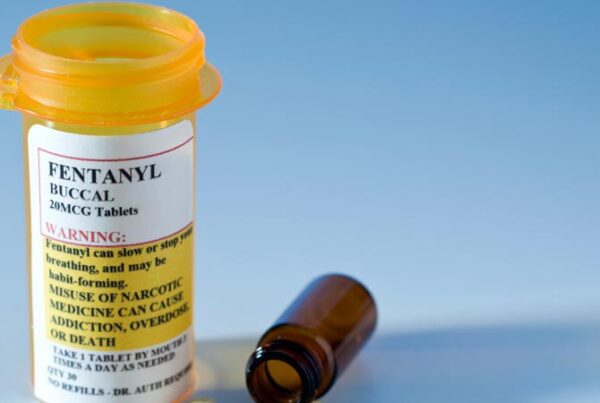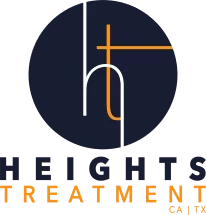Table of Contents
Tramadol has been one of the go-to medications for moderate and even severe pain for a long time now. While Tramadol is an opioid medication, it’s not as strong as many other common opioids, so doctors often go to Tramadol before considering a stronger medication to avoid harm.
Unfortunately, while Tramadol can be used responsibly and has many benefits, it’s still an addiction risk, just like other opioid medications.
Sadly, that also means that many patients have been prescribed Tramadol when their doctors wouldn’t have considered other opioid medications. This can mean that people are even more vulnerable to developing Tramadol dependence.
Here’s what you need to know about Tramadol, its use and why, and withdrawal symptoms. We’ll also talk about some of the most common signs of Tramadol addiction and what you can do if you think you might be dealing with an addiction and need help.
Let’s get started.
What is Tramadol?
You first need to know that Tramadol is an opioid pain medication that relieves moderate to severe pain. It’s not typically used for mild pain and isn’t generally recommended for long-term chronic pain management unless there aren’t other effective alternatives available.
In some cases, Tramadol may be used as a long-term medication to supplement other pain medications or help control breakthrough pain, which can sometimes be an issue for certain chronic pain patients. Again, other pain medications may be recommended or tried before Tramadol because of the potential for abuse.
How Is It Used?
There are two different ways to take Tramadol: an oral pill or an oral liquid that needs to be carefully measured to ensure you’re getting the right dose.
There aren’t many significant differences between the two preparations in terms of how they work, but liquid forms of Tramadol may allow for more precise doses if you need something between the doses available in tablet form.
If you have been prescribed Tramadol, it’s particularly important to ensure you only take the medication as prescribed, in exactly the amount you’ve been prescribed, and that you don’t take it more often than you need it.
Taking more Tramadol than you need, or taking it sooner than you are supposed to, can increase your risk of developing an addiction or other complications commonly associated with tramadol use.
Remember, even when you only take Tramadol or other opioid medications as prescribed, there is still a risk of addiction and dependence.

Tramadol Effects And Side Effects
Like all medications, Tramadol has a range of effects and side effects. It can impact people differently depending on their age, overall health, metabolism, other medications, and many other factors.
You can also have an allergy to this medication, which you may not know about until you’ve taken the medication.
Suppose you have severe side effects or suspect you might be dealing with an allergic reaction. In that case, it’s important to get medical attention, regardless of whether you take the medication with a prescription.
Here are some of the most common side effects of Tramadol:
- Fatigue
- Dizziness
- Loss of coordination
- Sleepiness
- Loss of appetite
- Nausea
- Vomiting
- Constipation
- Muscle weakness
- Itching
- Stomach pain
More serious side effects of Tramadol include:
- Agitation
- Mood swings
- Seizures
- Slow breathing
- Slow heart rate
- Feeling like you might pass out
If you experience any of these symptoms, you should consult your doctor or seek immediate medical care.
Is Tramadol Addictive?
Yes, like all opioid medications, Tramadol has the potential to become addictive.
The more you take, the longer you take Tramadol, and the less careful you are about following your prescription, the more likely you are to have complications or develop a chemical dependence or addiction to the medication.
That said, it’s important to remember that even people using the medication properly can develop an addiction and that addiction itself is not a sign of moral failing.
If you develop an addiction, treatments are available, and you can do things to overcome the addiction and get back to your normal life.
Tramadol Withdrawal Symptoms And Withdrawal Timeline
Withdrawal isn’t necessarily a sign of addiction. Anyone who uses Tramadol or many other medications long enough may have withdrawal symptoms when they stop taking that medication.
If you’ve been taking Tramadol for a long time, you may need to work with your prescribing doctor to lower your dose until you can stop entirely slowly. Lowering your dose this way can make it easier to deal with withdrawal symptoms or avoid them entirely.
Here’s what you need to know about tramadol withdrawal.
Tramadol Withdrawal
Because Tramadol is an opioid medication, it has opioid withdrawal. Drugs in this class have largely similar symptoms and a similar timeline for withdrawal, which can be good news. Since more than one drug behaves the same way, medical experts have a lot of knowledge about how to manage withdrawal and help support patients through the process.
Common symptoms of tramadol withdrawal include:
- Agitation
- Paranoia
- Anxiety
- Sweating
- Irritability
- Diarrhea
- Vomiting
- Nausea
- Stomach cramps
- Muscle cramps
- Runny nose
- Congestion
- Gooseflesh
- Restless leg syndrome
- Insomnia
- Panic attacks
- Confusion
- Delirium
- Increased heart rate
- Fast breathing
- Increased blood pressure
These symptoms may not all happen during your withdrawal, but you may get all of them. You may also have different symptoms at different points during withdrawal.
Some people may have more severe versions of these side effects. Dangerous complications during opioid withdrawal are rare, but they can happen, especially if you cannot hydrate or go too long without eating.
It’s important to have supplies ready for withdrawal, including drinks with electrolytes to help support hydration, easy-to-digest snacks like crackers, and comfortable clothing and blankets to help keep you as comfortable as possible.
It’s also generally a good idea to have someone around while you are going through withdrawal to make sure you’re okay and have someone to get help if you need it.
Withdrawal Timeline
Withdrawal symptoms can begin within 12-24 hours of your last dose and generally last up to a week before they start to fade. In some cases, especially if you’ve been addicted for a long time or have other health conditions that make it harder for your body to recover from the drug use, it can take up to two weeks to get past the acute phase of withdrawal.
Typically, you will have your worst symptoms within 72 hours of your last dose but will start feeling better around day 4 or 5.
Extended withdrawal is not necessarily a sign that you aren’t getting better. Instead, it’s a sign that your body has more work to do or that a metabolic change or liver problems may interfere with your recovery. Extended withdrawal is a good reason to get medical help to prevent a more serious underlying problem.
You may continue to have drug cravings long after the acute phase of withdrawal is over. It’s common for people who were addicted to Tramadol to report cravings for several weeks up to a year after stopping the medication.
If you have a history of abuse, you might have cravings for longer or psychologically craving Tramadol even after you no longer physically crave the drug.

Signs Of Tramadol Addiction
There are a lot of potential signs of tramadol addiction, but it’s important to remember that you don’t need to have all the signs of an addiction to have one.
Being worried that you have an addiction is a pretty good indicator that you might be dealing with one.
Here are some of the other common signs of addiction to Tramadol:
- You need to take more of your medication to get the same relief
- You want to take more of your medication than you need
- You want to take your medicine more often
- You spend a lot of time thinking about your medication and when you can take it next
- You have or have considered lying to a doctor about your condition to get more of your medication
- You have or have considered buying your medication from an online pharmacy or a street dealer
- You have or have considered stealing to pay for your medication
These are just some of the most common signs, but there are many more. If you are worried you might have an addiction, it’s a good idea to find someone you trust to talk about it or discuss your concerns with a trained medical professional who can help.
Ready To Overcome Tramadol Addiction? How To Get The Help You Deserve
There are a lot of potential resources if you’re ready to overcome an addiction. That’s a good thing because it means that you have a lot of things you can try and a lot of potential solutions that can make it easier to recover from your addiction and maintain your recovery.
However, because of the potential risks and difficulty involved in withdrawing from opioid medications, it’s a good idea to at least consider a residential treatment center.
Treatment centers are trained to deal with withdrawal symptoms and make you as comfortable as possible. They can also provide therapy and individual help that will make it easier to maintain your recovery after you leave the center.
If you think a treatment center might be the best option for you, contact Heights Treatment Center to learn more about our programs and how we’ve helped patients like you.
Sources:
1. Puckey M. Tramadol: Uses, Side Effects, Dosage, Warnings. Drugs.com. Published May 27, 2022. Accessed December 4, 2022. https://www.drugs.com/tramadol.html
2. Osburn CO. How Long Does Withdrawal From Tramadol Last? Verywell Mind. Published October 2, 2021. Accessed December 4, 2022. https://www.verywellmind.com/tramadol-withdrawal-4177612
The Heights Treatment Editorial Guidelines
There is a vast amount of misinformation online especially as it relates to health & wellness. We have made it our mission at The Heights Treatment to provide accurate, medically sound content that has been medically reviewed by a doctorate level clinician so that you can trust the information contained within our website.





